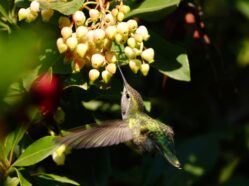Call for Associate Editors for AOS Journals
Interested in joining the editorial board of Ornithological Applications or Ornithology? Associate Editors manage the peer-review process by assigning papers (maximum of one new manuscript per month) to reviewers, synthesizing reviews received, and making recommendations to the Senior Editors or Editor-in-Chief. They also serve as ambassadors for the AOS journals and encourage manuscript submissions from …



